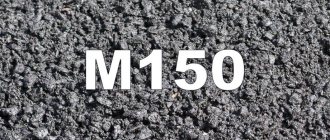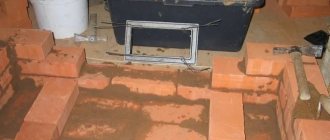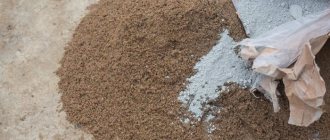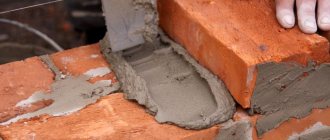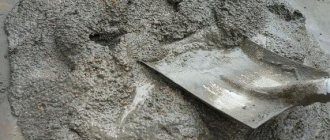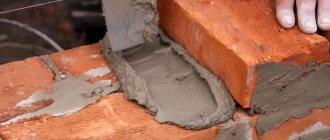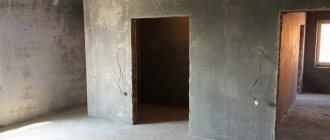In attempts to save money, especially in the case of arranging a summer cottage, you often have to sacrifice good quality. However, there is a simple solution - to use budget analogues correctly. Today I decided to write about one of these materials. Concrete M150: characteristics, proportions of basic components for mixing the mixture yourself, acceptable use cases.
Source 22.img.avito.st
How to buy M100 solution
You can order this building material in several ways:
- make an application directly on the website, through the purchase form;
- by phone with managers;
- request a call to your company;
- at the sales office of our company.
The price for masonry mortar M100 is negotiated additionally in each specific case. Transportation conditions are strictly agreed with the customer. Payment can be made in a way convenient for your company. Production facilities allow delivery to your site even on the day of order. The building material is completely ready for use and can be immediately used in construction work.
If you have any questions, call / 8-967-593-17-23 (Anna) or use the feedback form. Our specialists will help you! We are waiting for your applications!
Other grades of concrete
Order M150 solution with delivery to Ramenskoye
The goal of our company is to offer a wide range of products and services with consistently high quality service.
Ready-made mortar M150 is very popular in most construction operations. It has good adhesion to various surfaces, is plastic and moisture-resistant, and tolerates frost and temperature changes. At the same time, the M150 solution remains vapor permeable, which is important when constructing residential buildings. Additional components can be added to the finished mixture to give it specific characteristics - frost resistance, increased plasticity, antifungal properties or the desired color.
| Brand | Price, rub./m3 |
| M-150 | 2800 |
Why can you order M150 solution?
- Construction of load-bearing walls, columns, using bricks or building blocks.
- Plastering walls or ceilings.
- Leveling floors (screed).
- Repairing cracks in walls/floors/ceilings.
- Laying tiles on floors and walls indoors and outdoors.
- Installation of a serviceable roof.
- Laying opaque mosaics.
M150 solution proportions for a quality mixture
Despite the ease of preparation, it is not always possible to prepare a high-quality mixture on your own. Its characteristics are influenced by the quality and purity of all ingredients included in the composition. If it is necessary to carry out critical work, it is best to order M150 solution from the manufacturer, directly from the factory. This will guarantee its quality and compliance with all existing GOST standards. The correct proportions vary when using different grades of cement.
By contacting Monolith Concrete LLC, you can determine the characteristics of the mixture in advance so that the necessary additives are introduced into the finished composition. If there is any difficulty, our specialists will suggest the correct material parameters to perform specific tasks.
Technical characteristics of the M150 solution
| Durability, class | At 12.5 |
| Compressive strength | 150 kg/m 3 |
| Water resistance | W 7 |
| Frost resistance | F 50 |
| Mobility | 3 pcs |
In most cases, such characteristics of the M150 solution are sufficient for its use in almost all areas of civil construction. It is also possible to independently prepare high-quality material. But this will require quite a lot of physical effort - the sand must be thoroughly sifted and washed, and Portland cement should not contain additional additives.
Most construction companies see the need to order M150 mortar from the manufacturer. This not only becomes a guarantee of the quality of the mixture, but also its prompt delivery directly to the site. This is an important factor, because its viability is limited. Transportation by special vehicles ensures that all the properties of the building material are preserved.
Making your own solution
In addition to ready-made production options, it is possible to make lime mortar yourself. Buy all the necessary high-quality elements and carefully observe the proportions to achieve a high-quality result while saving money. The main ingredients used are cement, sand, lime and water.
The ratio of ingredients determines the brand and specifications.
| Brand of cement for preparation | Brand of lime composition | ||||||
| M200 | M150 | M100 | M75 | M50 | M25 | M10 | |
| Proportion of components – cement-lime-sand | |||||||
| M500 | 1:0,2:3 | 1:0,3:4 | 1:0,5:5,5 | 1:0,8:7 | — | — | — |
| M400 | 1:0,1:2,5 | 1:0,2:3 | 1:0,4:4,5 | 1:0,5:5,5 | 1:0,9:8 | 1:1,9:12,5 | — |
| M300 | — | 1:0,1:2,5 | 1:0,2:3,5 | 1:0,3:4 | 1:0,4:5 | 1:1,3:10 | — |
| M200 | — | — | — | — | 1:0,2:3,5 | 1:0,7:6,5 | 1:2:16 |
| M150 | — | — | — | — | — | 1:0,3:4,5 | 1:1,5:10,5 |
| M100 | — | — | — | — | — | 1:0,1:3 | 1:0,8:7 |
Water consumption during preparation is usually 0.8 parts per 1 hour of cement. In practice, the amount of liquid is determined visually by the consistency of the solution - normally the mixture should resemble thick sour cream.
Lime, as a building material, is used only in its quenched form, otherwise, as a result of a chemical reaction, the finished material may swell or burst completely. For preparation you will need a separate container. The process varies depending on the rate of extinction.
1. Quick-quenching lime is poured into a barrel of water until completely immersed. After steam appears, add more water and mix. Extinguishing takes an average of 8 minutes.
2. Medium-slaking lime is poured into a container and filled with water in double volume. When steaming, water is also added and mixed. The process lasts approximately 25 minutes.
3. Slow slaking lime is only moistened with water. The reaction is accompanied by a threefold increase in volume and an increase in temperature. Takes more than 25 minutes.
The prepared material is diluted with water in a 1:1 ratio to the state of lime milk. Often, to carry out the final extinguishing, it is poured into a special pit, sprinkled with a layer of sand and earth and kept in this way for 15-20 days. The composition acquires a creamy consistency and is now called lime dough or paste.
For cement-lime plaster mortar, the following is most often used as binder cement:
- Portland cement type I with a minimum amount of additives and a high setting speed;
- Portland cement type II grades M500-400 with additive content up to 35%.
As practice shows, three-layer plastering is most often used on construction sites. The proportions of the solution (water-sand-lime-cement) in this case will depend on the layer of plaster.
- rough layer – spray – 2.2:6.7:1.5:1;
- middle layer – soil – 2.8:9:2.2:1;
- finishing layer – covering – 4:13.5:3:1.
To prepare masonry cement mortar, it is more advisable to use a concrete mixer, since in practice more of it is required than plaster. The latter, in turn, is prepared in improvised containers using a construction mixer.
In the case of manual cooking, there are two types of procedures:
1. Lime dough is passed through a sieve with a cell diameter of no more than 3 mm. Then sand and cement are added to it in portions, everything is thoroughly mixed until the required fat content of the solution is obtained.
2. A dry mixture of sand and cement is prepared in the required ratio. Lime milk is gradually poured into it, if necessary, diluted with water to achieve the required consistency.
To increase the stability of the solution to environmental factors and slow down the hardening process, the following is added to the finished mixture:
- plasticizers;
- frost-resistant additives;
- retarders and others.
The Portland cement used in the composition also brings a number of positive characteristics to the material:
1. in combination with the action of hydraulic additives, it provides resistance to leaching, and therefore to long-term exposure to ground and sea waters;
2. provides cement with a high level of anti-corrosion protection;
Heavy solutions: composition, types, characteristics, application
Construction mortars are mixtures that contain: binder (one or more), fine aggregate (sand) and water. These materials, the composition and production of which are determined by GOST 28013-98, are used when carrying out masonry and plastering work, for fastening cladding elements.
Heavy mortars include mortars whose average density is more than 1500 kg/m 3 . A ready-made dry mixture is a mixture of components (binder, fine aggregate, additives) dosed directly at the factory.
Types of binders
The function of the binder in a building mixture is to envelop the aggregate grains and give the product the necessary mobility. After hardening, the binder provides strong binding of individual aggregate particles. The hardened material resembles stone in appearance and strength. Depending on the amount of binders, mortars are divided into simple and complex.
Cement
The most common option in modern construction is heavy mortars (ready-made or mixed independently), made from cement of various compositions and brands.
SP82-101-98 determines what types of cement need to be used for various applications.
| Operating conditions for finished structures | Type of cement |
| Aboveground elements of buildings, provided that the humidity of the interior is no more than 60%, as well as the construction of foundations located in low-moisture soil | Portland cement, including pozzolanic cement, as well as with water-repellent and plasticizing additives, Portland slag cement |
| Above-ground structures, provided that the room humidity exceeds 60%, foundations located in wet soils | Portland cement, including pozzolanic cement, as well as with water-repellent additives and plasticizers, Portland slag cement |
| Foundations operated in contact with aggressive sulfate-containing waters | Portland cement is sulfate-resistant and pozzolanic |
In standard construction conditions, Portland cement of the M400 and M500 grades with mineral additives in amounts of up to 20% is most often used. Visually, it is a finely ground powder of a grayish-greenish color. When stored even under standard conditions, the consumer characteristics of this product deteriorate. Over the course of a month, its activity decreases by about 5%. If the binder forms lumps that can be easily kneaded with your fingers, it can be used in construction, increasing the consumption by 20-50% of the calculated value. Setting of cement-sand compositions occurs in approximately 45 minutes (or more), and ends no later than after 12 hours. To obtain the required technical characteristics, additives are introduced into heavy cement-sand mortars: anti-frost, water-repellent, plasticizing and others.
Specifications
Let us consider in detail what technical characteristics modern cement-sand mixtures have in accordance with GOST.
Density
The thermal conductivity and strength of the cement-sand layer largely depend on the level of its density. In their pure form (without additional components), such solutions are quite heavy. They are distinguished by their high density, amounting to 1600-1800 kg/m3 in the solid state.
Thermal conductivity properties
Due to the high density, the thermal conductivity of such finishing materials is very high. A room with this design will always maintain a comfortable temperature and sufficient warmth. A similar effect cannot be achieved with lighter gypsum, which has a porous structure.
Vapor permeability
This characteristic is very important for any finishing material. Without it, condensation and excessive dampness will accumulate in the room. Over time, this will lead to the formation of mold and mildew.
Drying time
The drying time of the cement coating directly depends on the thickness of the layer. So, at temperatures from +15 to -25, a layer of 2 cm will dry out within 12-14 hours. The thicker the layer of applied solution, the longer it will harden. Experts recommend not touching the finished surface for another day after all the work has been completed. Of course, this rule is not categorical, but this way you can avoid damage to the freshly applied layer of cement.
What to consider when calculating?
Before starting calculations, you need to determine:
Purpose of the building mixture. To perform installation, construction and finishing work, different types of concrete are used. By purpose they are classified into:
- commodity - for pouring columns, foundations, reinforced concrete structures;
- hydraulic engineering – lining of sluices, canals, water supply and sewerage systems;
- airfield for various road surfaces;
- special purpose – protection from radiation, acid, high temperatures.
How to stir
To create a solution, the amount of sand has already been determined; now you need to use the tool. For large quantities of the required mixture, a concrete mixer is best, which mixes all the components independently.
Concrete mixer
When small volumes of mixture are required, it is enough to have a drill with a mixing attachment, it will quickly and effectively bring the solution into a homogeneous state. You should not set a high number of revolutions initially, since cement is very volatile.
Drill with mixer attachment
As a last resort, make sure you have trowels, a spatula or any other tool for mixing the mixture.
To properly dilute the solution, you should follow the following basic recommendations:
- Initially, water is poured into the container. Usually the amount of water is calculated from a 1 to 1 ratio with cement. When the sand contains a certain amount of moisture, this coefficient can be reduced slightly;
- immerse half of all sand in water;
- all the cement is poured at once. Now you need to thoroughly stir the mixture, about 2 minutes will be enough for the procedure;
- the sand that remains must be added to the solution. Mix again using your chosen method;
- Check the consistency and, if there is a need for a thinner mass, add more water. The consistency greatly depends on the purpose of the solution.
Experienced builders point out several main factors that are characteristic of properly prepared cement mortar
First of all, it is important to make sure that the mixture stays on the trowel and does not have a layer of water, due to which everything falls off, which is typical for poor stirring
It is necessary to thoroughly mix the solution, otherwise areas with a high content of cement and a low amount of sand, or vice versa, will instantly crack. It should also be remembered that cement is added to water, and not vice versa.
For more information on how to properly mix cement mortar, watch the video:
Conditions and prices for delivery by mixers with a 10m long feed belt.
DELIVERY IN THE CITY
- Minimum delivery volume: 1m 3 .
- Minimum delivery cost: 6000 rub.
- Delivery cost over 6m 3: 1000 rub./m 3
DELIVERY OUTSIDE THE CITY
- Minimum delivery volume: 1m 3 .
- Orders 3 – cost 6,000 rub./mixer + 3,000 rub./mixer for every 10 km. outside the ring
- Orders > 6m 3 – cost 1000 rub./m 3 + 500 rub./m 3 for every 10 km. outside the ring
- Travel post + 1000 rub./piece.
Free unloading time: 1 hour Quantity in stock: 2 mixers. Volume: 6m3, 8m3. Tape length: 10m. Feeding height: up to 3m.
We work in Tyumen: in the region, in the districts
Ours accepts orders for the purchase of M100 solution with delivery in Tyumen, throughout the region. We work in city districts, microdistricts: Abatskoye, Armizonskoye, Aromashevo, Berdyuzhye, Vagai, Vikulovo, Golyshmanovo, Zavodoukovsk, Isetskoye, Ishim, Kazanskoye, Nizhnyaya Tavda, Omutinskoye, Sladkovo, Bolshoye Sorokino, Tobolsk, Uvat, Uporovo, Yurginskoye, Yalutorovsk, Yarkovo. . View also Abatskoye, Armizonskoye, Aromashevo, Berdyuzhye, Vagai, Vikulovo, Golyshmanovo, Zavodoukovsk, Isetskoye, Ishim, Kazanskoye, Nizhnyaya Tavda, Omutinskoye, Sladkovo, Bolshoye Sorokino, Tobolsk, Uvat, Uporovo, Yurginskoye, Yalutorovsk, Yarkovo, Fifth district , Vostochny district, Star City district, Sixth district, Zaikova, First district, Bereznyakovsky, KPD District, Kazarovo, Melioratorov, Tura, Verkhniy Bor, Sukhodolsky district, Second district, Matmasy, 2nd Zarechny microdistrict, Zarechny microdistrict, Antipino, Voynovka, Tyumen 1st microdistrict, Yuzhny 2 microdistrict, Fourth microdistrict, Tarmany, Knyazheva, Stroiteley village, Komarovo, Tyumensky-3 microdistrict , Tyumensky-2 microdistrict, MZhK microdistrict, 2nd microdistrict, 3rd microdistrict, Vostochny microdistrict, Vostochny-2 microdistrict, Malakhovo microdistrict, Andreevsky village, Taraskul microdistrict, Tyumenskaya Sloboda microdistrict, Yuzhny microdistrict, DOK microdistrict, Trufanovo village, village Novoroshchino, Roshchino microdistrict, Uteshevo microdistrict, Voronin microdistrict, Plekhanov microdistrict, Metelev microdistrict, Workers' settlement, Lesnoy microdistrict, cottage village on Mokhovaya, Dorozhny microdistrict, Lesobaza microdistrict, Cossack Luga microdistrict, Entuziastov microdistrict, Gilevo microdistrict, Mys microdistrict, Bykova microdistrict, Kopytovo microdistrict, urban-type settlement Bukino, Zareka microdistrict, 1st Zarechny microdistrict, 3rd Zarechny microdistrict, Vatutino microdistrict, Yugra microdistrict, Neftyanikov microdistrict, Parfenovo microdistrict, Pushkin microdistrict, Velizhansky microdistrict, Three Sosny microdistrict Hide
To deliver solutions, our company uses mixers from our own fleet, the number of which ensures the ability to deliver any volume of solution required by clients in the shortest time frame. It is also possible to pump the solution from mixers at customer sites. Delivery is possible to any point in Tyumen and the region.
Scope of application of M-200 cement mortar
These mixtures are used in the installation of vibrating brick panels, for filling joints in structures made of heavy types of concrete, as well as for plastering these buildings.
Since M-200 cement mortar is resistant to water, it is often used as waterproofing. These mixtures must be made using cement M400 or higher. Materials based on such an expanding waterproof binder can withstand hydrostatic pressure of 5 atmospheres 24 hours after pouring. If the structure will be constantly exposed to chemically aggressive waters, then a mixture containing a certain type of binder should be used - sulfate-resistant pozzolanic cement.
In private construction, ready-made mixtures of the M-200 brand are used for floors made of mosaic, ceramic and granite tiles, clinker bricks, paving stones, concrete slabs, cast iron perforated slabs, and so on.
Composition of concrete M150
The composition of this type of building material is traditional for heavy concrete: cement, sand, crushed stone and water. At the same time, various additives and additives are used to impart special properties to concrete.
Traditionally, the following material is used: Portland cement CEM I 32.5N PC (M400) or CEM I 42.5N PC (M400) as the most affordable, quarry sand and crushed granite stone of 20-40 mm fraction.
As an option, river sand and crushed gravel can be used, and in non-critical cases, construction waste can be used instead of crushed stone: broken bricks, pieces of plaster, broken tiles, etc.
Preparation
If home renovation involves using a small part of cement mortar, then it is better to buy a ready-made option, which will speed up the process itself, but in the case of a large scale of work, it will be cheaper and more economical to purchase the necessary ingredients and mix them yourself.
To obtain a good result, the most important criterion will be the use of the correct proportions of the components included in the composition.
In preparation for mixing the solution, you need to prepare a metal or plastic container in which you can mix all the ingredients. Using a shovel will be convenient to pour all the ingredients into the container and mix them.
Using a trowel will allow you to apply a ready-made solution to the surface, but it can also be used to mix a small amount of the substance if you need to cover only a few cracks.
At the first stage of preparation, you need to work only with sand and cement, which must be mixed well with each other. The choice of proportions in this case depends only on the brand of cement that will be chosen.
The resulting cement plaster will be divided into the following grades:
- M200 with a grade of 200 will have a sand to cement ratio of 1: 1, with a grade of 150 it will be 1: 2.5, for 100 it is 1: 3.5, and for 75 it is 1: 4;
- M400 at grade 200 will have a sand to cement ratio of 1: 2, at 150 it will be 1: 3, at 100 it will be 1: 4.5, and at 75 it will be 1: 5.5;
- M500 with grade 200 the ratio of sand and cement will be 1: 3, for 150 it will be 1: 4, for 100 - 1: 5.5, and for 75 - 1: 7.
In order to make a high-quality solution, the first thing you should do is sand. It is sifted through a sieve to remove any inclusions. The cement must be relatively fresh, because working with stale residues can be problematic. If there is no choice, then it is sifted, just like sand, so that hardened areas can be removed and only a one-component composition can be left. In this case, the proportion of sand is reduced by ¼ due to the atypical characteristics of cement.
In order to dissolve such a mixture, only water is not always enough; often you need to add a plasticizer to it.
There is another option for making a cement-sand mixture, but it involves the reverse sequence of actions. First of all, water is collected, the amount of which in the container should be 4/5 of the required volume. After this, liquid soap or other detergent is added, which foams as much as possible. Only after this you need to pour half the volume of sand and all the necessary cement into the working container. All contents are mixed until a homogeneous mass is obtained.
The next step is to add the remaining sand, after which the solution must be stirred until it becomes completely homogeneous
It is very important that the cement and sand are mixed very well, otherwise the result of working with it will be disappointing. Using this option, you can mix the components much more efficiently and obtain the optimal composition than with dry mixing
It is important to add some water during the final mixing process, which will make it possible to obtain a solution of the desired consistency.
How to cook?
It is quite possible to make a cement-sand mixture yourself. To do this, you should adhere to the correct proportions and not waste time so that the composition does not begin to dry out. Let's consider several options for preparing such a solution.
For screed
For such work, cement marked M400 or M500 is most often used. If you chose the 400 brand, then you need to adhere to the proportion of 1 to 2, and in the case of the M500 - 1 to 3.
For masonry
In this case, the quality of the finish is determined by the thickness of the seam. Here a lot depends on how the sand was prepared. It must be thoroughly sifted and dried. As a rule, 3-5 parts of bulk material are taken for one part of the cement component.
Experts recommend making masonry mixtures in moderate quantities. First, you should check the quality of the resulting composition on a separate surface, after which it will be much easier to calculate the proportion of binder components and the sand itself. At this moment, the approximate consumption of the cement-sand mixture for masonry becomes clear. Thanks to such actions, significant waste of material can be avoided.
For plaster
The preparation of such compositions is quite simple. In this case, it is necessary to knead all components in a ratio of 1 to 3.
The preparation of a high-quality and durable solution depends not only on well-selected components, but also on thorough mixing. It is almost impossible to achieve the desired effect manually, even if you use a ready-made composition.
For dry mixture
When using dry and semi-dry mixtures to organize screed, it is necessary to take into account the characteristics for each specific mixture, which can be found on the packaging. Usually indicate the volume of the mixture to cover one square meter of the base with a layer of 1 mm. For example, to obtain a solution of grade M100 sufficient for use indoors in residential premises, the manufacturer of semi-dry floor screed recommends the following consumption:
- mixture consumption is 2 kg per square meter with a screed thickness of 1 mm;
- water consumption is 0.22 l per 1 kg of mixture.
Taking into account the above data, you can calculate the required material for 30 square meters with a screed thickness of 40 mm.
It is necessary to multiply the area by the consumption of the mixture by 1 m2 and by 4 (since the planned thickness of the screed is 4 mm, and the calculation is given for a thickness of 1 mm). We get: 30x2x4 = 120 kg, while the volume of water required: 120 kg x 0.22 l = 26.4 liters.
(function(w, d, n, s, t) w[n] = w[n] || []; w[n].push(function() Ya.Context.AdvManager.render( blockId: "RA- 510923-1", renderTo: "yandex_rtb_R-A-510923-1", async: true >); >); t = d.getElementsByTagName("script")[0]; s = d.createElement("script") ; s.type = "text/javascript"; s.src = "//an.yandex.ru/system/context.js"; s.async = true; t.parentNode.insertBefore(s, t); >) (this, this.document, "yandexContextAsyncCallbacks");
Cement mortar grades M-150 and M-200.
Grades of cement mortar M-150 and M-200 are used, as a rule, in the manufacture of screeds, vibrating brick panels, as well as for filling joints in structures made of heavy concrete and plastering walls.
Scope of application of M-150 cement mortar
This brand of solution is highly durable. The difference between this brand of cement mortar is that it cannot be mixed with other brands that have lower binder properties. Ready-made commercial mortars starting with grade M-150 do not contain clay, lime, gypsum and other binders that have low strength.
For brick and stone masonry, M-150 mortar is usually not used. Since it has improved characteristics, its use in masonry work is quite expensive.
Cement mortar M-150 is usually used for the construction of foundations on weak soils or wet types of soil. In addition, it is actively used for the equipment of hydraulic structures as a masonry or plastering material (water parks, swimming pools, underground communications, sewer lines, and so on).
In civil and residential construction, the following work is carried out using ready-made mortar: laying the facing layer of floors, pouring screed and laying ceramic tiles. Online calculation of the composition of cement mortar.
To use M-150 grade cement mortar as a plastering material, structures must be cast from concrete of the same grade.
How to calculate the consumption of m150 mixture per 1 m2 of floor screed made from cement-sand mortar
The consumption of M150 mixture per 1 m2 of screed is the main parameter that determines the cost of pouring the floor, duration and resource costs.
It is very important to be able to correctly calculate the consumption of a cement mixture, because an insufficient volume of solution will lead to technological downtime and deterioration in the quality of the pouring layer due to interruption; exceeding the required volume will lead to unjustified costs (after all, the prepared mixture must be used within 2 hours, then it will be unusable) . Despite the huge variety of flooring materials on the market, the M150 mixture is considered the most optimal choice due to its reasonable cost, versatility, good technical characteristics, and ease of installation. It is also important that the mixture dries quickly enough and can be used not only for pouring screed, but also for plastering, laying walls made of brick and other blocks, as well as for other work.
Sand to cement ratio
If you choose ready-made cement, you need to remember some information:
- The type of solution is determined by the load on the future foundation.
- The brand indicates the degree of strength of the solid composition under compression. The higher the number in the name of the composition, the higher its strength and cost.
- For finishing and preparatory work without a large load on the surface, you can use cement grade 100. However, for the strongest structures you must choose grade 300-500.
- The ratio of sand, concrete and crushed stone components should be in the proportion 1: 3: 5.
For brickwork
To work with such material, the most common version of the proportions is suitable, for which you need to take 1 part cement and 3 parts sand. Choose sand with medium-sized particles.
In the process of preparing the mixture, you first need to mix the dry ingredients until smooth, then dilute it with water
Now let's look at other options for the ratio of components of the cement mixture for brickwork using various additives:
- Cement grade 500 with sand - 1 part cement to 3 parts sand, for grade 400 - 1 to 2.5.
- Cement with added lime - 1 part cement grade 300,400 or 500 to 2.5-4 parts sand and 1.3-2 parts lime.
Water is added in a volume of 8/10 per 1 part of a mixture of cement and sand. For 1 part of a 100 grade product you need 1/2-7/10 parts of water.
For concrete
To determine the appropriate brand of cement for working with concrete, it is also worth focusing on the operating conditions. The solution for such material includes not only cement, sand and water, but also crushed stone, gravel and other elements. The ratio of the number of components depends on the final goal.
Most often, the proportions are as follows: 1 part cement, 4 parts crushed stone, 2 parts sand, 1/2 part water.
For plaster and screed
The cement mixture for such work should consist of diluted cement and sand in a ratio of 1: 5
Therefore, the optimal grade of concrete here would be M150.
This material has a strength index of 12.8 MPa, which meets the requirements. Also, when choosing the composition of a cement mortar, the following parameters should be taken into account:
- the presence of any communications and the possibility of their concealment;
- the need to level or change the height of the surface.
Each brand of concrete used in floor screed mortars has its own requirements for the proportions of sand and cement:
- M100 – 1 to 3;
- M150 – 1 to 2;
- M200 – equal parts;
- M150 – 1 to 3;
- M300 – equal parts;
- M400 – 1 to 2.
For the foundation
The building mixture for constructing a foundation includes not only water, sand and cement, but also crushed stone. The components must be taken in the following ratio: 1 part cement, 2 parts crushed stone and sand. If you need to prepare a more durable structure, you can increase the amount of crushed stone added. And to increase elasticity, you should mix a solution with a high clay content.
Application
The formulation of the M150 solution is composed in proportions that ensure the use of the solution for the maximum number of types of work:
- installation of floors and preparation for them;
- production of screeds and cement-sand coatings with high performance;
- performing plastering work on any surfaces with or without reinforcing mesh with a low rate of cracking;
- use in external cladding, tiling and decorative work with a defrost cycle of up to 75 times;
- laying brick and block walls and foundations;
- installation of reinforced concrete structures of any level of responsibility.
Basic proportions
When preparing solutions, the working measure is the mass or volume fraction of the binder; the most common and convenient ratios include 1:3:5 (cement, sand, gravel, respectively). The regulated proportions, depending on the required strength of concrete, are:
Final brand of solution
In private construction, it is inconvenient to separately determine the mass of all poured ingredients; a bucket is usually used as a measuring tool. In this case, all fillers are pre-weighed in a dry state. The W/C ratio largely depends on the moisture content of the sand; experienced developers add no more than 80% of the recommended proportion of water during mixing and then, if necessary (the consistency is not sufficiently plastic), pour it in portions. Fiber, PAD and other plasticizers are added to concrete at the very end along with the liquid; their share usually does not exceed 75 g per 1 m3.
Specific gravity of liquid concrete
| Brand | Mass of a cube of liquid concrete, t |
| M100 | 2,366 |
| M150 | 2,36 |
| M200 | 2,362 |
| M300 | 2,358 |
| M400 | 2,35 |
| M500 | 2,355 |
The ratio of mass to occupied volume (specific gravity) depends on the proportions of the components, the volume of liquid, the mixing method, etc. The volumetric mass of liquid concrete and methods for its calculation are prescribed in GOST 12730.1-78.
